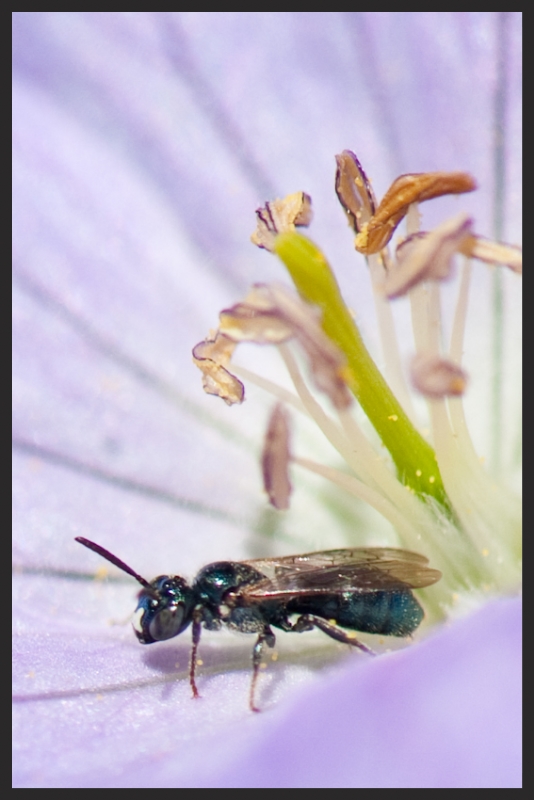Bee Friendly Spring Clean-Ups
With the snow finally melting, our maintenance crews are eager to get out in the field and perform annual spring clean-ups of our restorations sites! Usually this entails cutting down the old vegetation from last year and raking it out to leave a nice tidy open area. This enables more sunlight to reach the ground, and this solar radiation helps to trigger plant growth. However, with our native bee populations in decline, it's worth considering how to best manage our restoration areas. Can we strike a balance between bee habitat, plant regeneration, and aesthetic needs?

|

|
|
Before
|
After
|
Many different species of bees and other pollinators use natural area restorations for habitat. Insects have varied habitat needs. Using our native bees as an example, 30% of bees nest in cavities made from hallowed out stems of old vegetation or in trees and shrubs. The other 70% are ground nesters, needing patches of bare ground to nest. Historically, our spring clean-ups have left more bare ground for those types of bees.

|

|
|
Ground Nests (Photo by Heather Holm)
|
Cavity Nest (Photo by Heather Holm)
|
After seeking advice from several experts, we now are suggesting that our clients think about leaving habitat for the 30% of bees that use ground litter and old vegetation for nesting sites. Heather Holm, author of Pollinators of Native Plants, says "Leaving some pieces of stems that are hollow (at least 8" long) on the ground can provide nesting sites." She also advised that some species have specific preferences for their habitat as well, like the small carpenter bee that favors their nests made out of soft wood orientated at an angle. She suggested placing perennial stems that weren't hollow at an angle in the restorations for these bees to use.
 |
|
Small Carpenter Bee (Photo by Heather Holm)
|
Crystal Boyd, entomologist at the Minnesota DNR, also had sage advice about what habitat to leave for bees, "It's safe to say that many tall, hollow grasses provide nesting habitat. Some bees use pithy shrubs (like elderberry, boxelder, sumac, raspberry, blackberry, and dogwood). Other bees use standing dead wood that has beetle tunnels."
Last season's vegetation also has pupae (bee offspring) from last year's nesting sites that won't emerge until later this season. Leaving this vegetation on site will ultimately increase resident bee production. So this year, Natural Shore maintenance crews will work with clients to leave more vegetation from last year standing, especially hollow stems or pithy materials that bees can used for their nesting habitat. Our bee experts have told us cutting down the vegetation but not raking it all off of the site is one way to make the restorations look "neater" while still maintaining habitat and function to the site.
Visit our Maintenance Program webpage to learn more about our bee-friendly practices or contact our Maintenance Coordinator Tracy at [email protected] or 612-220-4178. To learn more about another issue threatening pollinators, neonicotinoid pesticides, visit our blog page here.
Interested in learning more about pollinators and their relationships with native plants? Check out Heather Holm's new book Pollinators of Native Plants. It is available on Amazon and sold in our retail nursery.